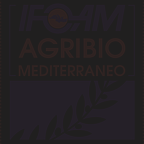Biocyclic Humus Soil — A Revolutionary Substrate for Future Plant Nutrition
Contribution to IFOAM ABM — Growers’ Forum November Newsletter
by Dr. agr. Johannes Eisenbach, Kalamata/Greece
The olive tree produces a huge volume of organic matter every year which under “normal” conditions are extracted dfrom the orchard without being returned in some kind to the soil. The inner sense of the term “biocyclic” is to close the circuit of organic matter and to create local “recycling centers” to increase the percentage of organic substance in the soil.
The first step to achieve that is to collect olive leaves and olive cake from olive mills as well as other materials of plant origin available in the region. To produce high value compost from that materials, a specific procedure alongside with the suitable technical equipment must be established monitoring simultaneously humidity, CO2 as an indicator for lack of oxygen and temperature. After the material has passed a 2–3 months period of aerobic microbial decomposition with high temperatures around 52–65°C, temperature begins to drop, and the material reaches the first stage of nutrient stabilisation while the microbial degradation continues. To achieve full ripeness, the compost needs to be treated at least another 4–6 months. After that, a high value compost is characterized by its high water-capacity, low plant toxicity, stable nutrient content and high porosity. What is new about compost is the fact that there is another stage of maturity which even surpasses the definition of a ‘compost substrate’ (category RAL V). Permanent cultivation on the substrate itself according to a crop rotation programme adapted to the degree of ripeness over 4–7 more years and turning the substrate only once or twice a year turns the material into a carbon and nutrient stabilised form of organic matter that can be addressed as “humus soil”. Regular tests and analyses determine the entry of the material into the stable humus phase. At this stage, the material has gained completely new, unexpected properties.
The main characteristics that distinguish purely plant based biocyclic humus soil from commercial composts, soil improvers and substrates are its high concentration of nutrients, a particularly low electrical conductivity (like drinking water), a very narrow C:N ratio (under 9) and a remarkably high cation exchange capacity with a fertilising effect, which, according to research done by the Agricultural University of Athens, more than doubles the yields per hectare, even in case of intensive cultures like sweet potatoes and industrial tomatoes1. In addition, all macro- and micronutrients contained in humus soil are available in a non-water-soluble form, so that humus soil is not at risk of leaching even under irrigation management or in regions with high precipitation. What initially was considered problematic raw material or even waste (e.g. olive pomace) has been proven to be extremely favourable ingredients in a substrate that could play a major role in feeding the world in the future.
Due to its extraordinary properties, biocyclic humus soil can be used for both, fertilisation in agriculture, horticulture or for perennial crops and as a substrate for seedlings and greenhouse cultivations or even as a soil substitute in urban farming or in vertical agriculture. That fact that in biocyclic humus soil all nutrients occur in a non-water soluble form forces plants of all ages and development stages that are grown directly in humus soil to activate their natural nutrient absorption mechanisms like the production of root acids, the enhancement of mycorrhiza development or other symbiotic behaviours that allow plants to actively select the nutrients they absorb in order to cover their nutritional needs. In comparison with the application of liquid or water-soluble fertilisers with the plant not being capable to select what is dissolved in the water, using humus soil even in big quantities means that there is no danger of over fertilisation or burnings or any groundwater contamination.
Thus, humus soil can be used unrestrictedly in water conservation areas or even in areas with marginal soils in arid zones. By increasing soil quality and yields humus soil can contribute to secure word nutrition. Since it can be used even for plant breeding, it replaces the use of peat. In addition, the carbon stabilization that occurred during the refining process binds atmospheric carbon over many decades in the soil, comparable to ‘Terra preta’ or ‘Biochar’ and thus much longer than other forms of organic matter with a high concentration of humic acid molecules (Dauerhumus). Therefore, humus soil — if produced in sufficient quantities — could make an effective contribution to mitigating the consequences of climate change.
The aim is to provide agriculture and horticulture with as large quantities of biocyclic humus soil as possible. Humus soil plays a central role in biocyclic vegan cultivation as a substitute for any form of animal manure.
There is further research needed when it comes to the processes at the microbial and macromolecular level, which determinate the stable humus phase in the production process of humus soil. The model of the transitions of the organically bound carbons into a procrystalline grid structure provides initial explanations, but still needs verification based on electron-grid microscopic analyses of the carbon structure expected in humus soil.
References:
- Lydia Dorothea EISENBACH, Antigolena FOLINA, Charikleia ZISI, Ioannis ROUSSIS, Ioanna TABAXI, Panayiota PAPASTYLIANOU, Ioanna KAKABOUKI, Aspasia EFTHIMIADOU, Dimitrios J. BILALIS «Effect of Biocyclic Humus Soil on Yield and Quality Parameters of Processing Tomato (Lycopersicon esculentum Mill.)», BulletinUASVM Horticulture 76(1) / 2019, p. 47–51, 2019.
http://www.biocyclic-vegan.org/wp-content/uploads/2020/01/EFFECT-OF-BIOCYCLIC-HUMUS-SOIL-ON-YIELD-AND-QUALITY-PARAMETERS-OF-PROCESSING-TOMATO-Bulletin-of-University-of-Agricultural-Sciences-and-Veterinary-Medicine-Cluj-Napoca.-Horticulture-%C2%B7-June-2019.pdf - Lydia Dorothea EISENBACH, Antigolena FOLINA, Charikleia ZISI, Ioannis ROUSSIS, Ioanna TABAXI, Panayiota PAPASTYLIANOU, I. KAKABOUKI, Aspasia EFTHIMIADOU, Dimitrios J. BILALIS, «EFFECT OF BIOCYCLIC HUMUS SOIL ON YIELD AND QUALITY PARAMETERS OF SWEET POTATO (Ipomoea batatas L.)», Scientific Papers. Series A. Agronomy, Vol. LXI, №1, 2018, p. 210–217, 2018.
http://www.biocyclic-vegan.org/wp-content/uploads/2019/01/EFFECT-OF-BIOCYCLIC-HUMUS-SOIL-ON-YIELD-AND-QUALITY-PARAMETERS-OF-SWEET-POTATO-Scientific-Papers.-Series-A.-Agronomy-Vol.-LXI-No.-1-2018.pdf - http://pacificrootsmagazine.com/podcast-episode-v-dr-agr-johannes-eisenbach-panhellenic-biocyclic-vegan-network/?fbclid=IwAR3WfUIHsBu42evRDBabwPq66_hiignL22Q-Ec47XRcCi5ycyk9chWcE76g
- http://biozyklisch-vegan.org/biozyklische-humuserde/
